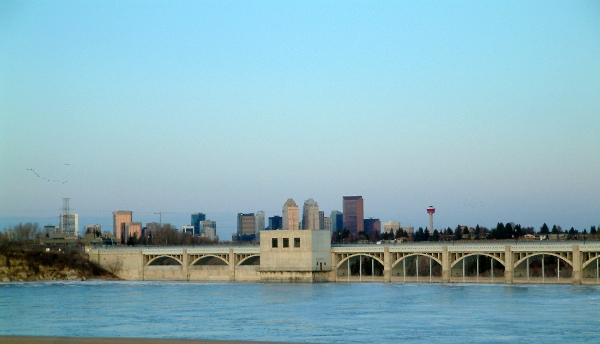What are Dams and Reservoirs?
Dams are structures built on a river in order to retain water for one or more specific purposes (e.g. hydroelectricity generation, water storage, irrigation structures, flood control). Reservoirs are formed behind a dam. While they may often look the same, reservoirs are not lakes. Lakes are natural depressions in the land which have been filled by water.
A reservoir is a body of water that has been constructed in some way to store water [i]. It can be confusing to talk about reservoirs and dams, as sometimes these terms are used interchangeably. However, dams and reservoirs are two entirely different things. An easy distinction to remember is that a dam is a physical structure that retains water; a reservoir is the water body that is created by a dam. Helpfully, the dam and the reservoir often have different names such as the W.A.C. Bennett dam in British Columbia holding back the Williston Reservoir [ii].

Why build dams and reservoirs?
Dams and reservoirs can serve a variety of purposes. The purpose of a reservoir and dam can be singular or multiple [iii] and can also change over time as a result of changing needs or preferences.
Dams and reservoirs serve various purposes [iv]. Some are listed below:
- Water storage: Water can be stored to provide water supply for industrial, municipal or irrigation purposes.
- Hydroelectric generation: Dams can be used to generate hydroelectricity. Roughly 1/6th of the world’s electricity generation is by hydroelectric dams [v].
- Recreation: Reservoirs may allow for recreational activities such as boating and fishing.
- Flood protection: Some dams are designed specifically for flood protection. These specific dams are usually designed to reduce flood peaks. In some cases, a dam may have a secondary function that can be used for flood protection. If appropriate planning is undertaken, the level of a reservoir can be lowered to hold back some floodwater.
- Waste containment: Reservoirs can be built to contain tailings from mining operations.
- Navigation: some dams are used to raise water levels to allow for improved navigation upstream of the dam.
By some estimates, Canada has over 15,000 dams [iii]. Of those, 1,157 are considered “large”. Some examples of large dams and reservoirs in Canada:
- W.A.C. Bennet Dam forming Williston Reservoir in British Columbia [ii].
- Gardiner Dam and Qu’Appelle Dam forming Lake Diefenbaker in Saskatchewan [vi].
- Robert Bourassa generation facility forming the Robert-Bourassa reservoir in Quebec [vii].
Sources:
[i] Britannica, 2023, “Reservoir”. https://www.britannica.com/technology/reservoir. Accessed 2023-09-08.
[ii] BC Hydro, n.d., W.A.C. Bennett Dam Visitor Centre. https://www.bchydro.com/community/recreation_areas/visitor-centres/wac-bennett-visitor-centre.html. Accessed 2023-09-08.
[iii] Canadian Dam Association, n.d., Dams in Canada. https://cda.ca/dams-in-canada/dams-in-canada. Accessed 2023-09-08.
[iv] About Civil Engineering, 2018, Purposes of Dams – Importance, Functions and Applications. https://www.aboutcivil.org/dams-purposes. Accessed 2023-09-08.
[v] Energy Education, n.d., Hydropower. https://energyeducation.ca/encyclopedia/Hydropower. Accessed 2023-09-08.
[vi] Water Security Agency, n.d., Major Dams and Reservoirs. https://www.wsask.ca/lakes-rivers/dams-reservoirs/major-dams-and-reservoirs/. Accessed 2023-09-08.
[vii] Hydro-Québec, n.d., Visit the Robert‑Bourassa generating facility (La Grande‑2)! https://www.hydroquebec.com/facility-tours/tours-general-public/robert-bourassa-baie-james.html. Accessed 2023-09-08.
